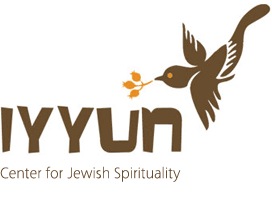To err is human, we all make mistakes. “There is no righteous person on this earth who does [only] good and does not err,” the wise King Shlomo wrote.
And yet despite the fallibility of human beings, as a tremendous kindness, God has given us teshuvah—a way of returning to God by acknowledging our errors and resolving not to repeat them. This is not only a way to repair our mistakes but perhaps even to alter the past. Without teshuvah, life would be quite hopeless. Without a means to unshackle ourselves from our negative past, we would be forever crushed by the burdens of our past errors.
Teshuvah is essential for creation; in fact teshuvah was fashioned before the actual creation, according to the Talmud (Pesachim 54a.) The Zohar writes that prior to creating this physical world, the Creator conceived the notion of teshuvah and said, “Soon, I am going to create mortal human beings, but I do so on one condition: when they, because of their iniquities, turn to you, you must be prepared to erase their faults.”
A world imbued with teshuvah is a world of optimism, life and genuine opportunity, for regardless of our current state, we have the power to reorient our life and leap over any obstacles generated by our past deeds. teshuvah affords us the freedom to liberate ourselves from the past and begin anew, rejuvenated and revitalized.
Regret and acceptance
Classic Torah commentaries contend that the principal ingredients of teshuvah are regret-charata and acceptance-kabbalah.
True regret requires a recognition of the negative act and a firm resolution – made consciously and with a whole heart — not to repeat it.
But we know well that we tend to forget our resolutions. Indeed, forgetfulness is the root cause of transgression. Often, were it not for assistance from above to overcome our negative temptations, which are so good at causing memory lapses, we would not succeed, as the Talmud tells us (Kiddushin 30b). Therefore, it is essential to always keep in mind that we are sinners – and always close to falling into transgression – and that God alone constantly rescues us.
But how can we, realizing that our sin is so deeply ingrained, have true regret over the past? So, too, how can we resolve not to sin in the future, when our experience shows clearly that without God’s help, we will certainly lapse again?
In truth, remorse over the past indicates an acute awareness of our lowliness – an awareness which must be engraved in the heart. In fact, the Hebrew word charatah, meaning “remorse” is related to charitah “engraving.” Once this awareness is so engraved, we stand a better chance of never again forgetting our history and slipping. This act of engraving, in turn, creates within our hearts a receptiveness to God’s mercies. Thus we can accept kabbalah, God’s mercy, with an absolute trust that God will save us from the bitterness of our soul and strengthen us to choose wisely in the future.
Four types of teshuvah
Early Jewish works of ethics speak of four categories of teshuvah:
- Teshuvat HaBa’ah-literally teshuvah “of what comes next” – this teshuvah that occurs when we refrain from repeating a transgression when we find ourselves in the same condition or environment that had engendered a previous misdeed.
- Teshuvat HaGeder-literally teshuvah “of the fence” – in the process of doing teshuvah, we erect for ourselves additional barriers and restrictions so that we may not be tempted to transgress. We deny ourselves even things that are permitted to us so that we will not inadvertently step over the line and fall.
- Teshuvat HaMishkol-literally teshuvah “of the measure” – this is penance commensurate to the transgression. We inflict discomfort on ourselves equivalent to the measure of pleasure we had enjoyed from committing the transgression.
- Teshuvat HaKatuv-literally teshuvah “of what is written” – we accept upon ourselves the equivalent of the Divine judgment as written and detailed in the Torah.
Teshuvah does not does not necessitate depriving or neglecting the body, according to the Baal Shem Tov — on the contrary, “a small hole in the body is a colossal cavity in the soul.” There are countless other means to refine ourselves such as giving charity or studying Torah. And am even better way is to transform the body so that whatever part of the body one used to commit an offense – a mouth to speak gossip or lie, a hand to strike someone – is re-energized to do good – a mouth to speak words of Torah, a hand to give to charity.
Verbal confession
In addition to regretting past deeds and resolving to do better in the future, most commentators include confession-viddui as another integral component of teshuvah.
Teshuvah is not complete until we articulates what went wrong in the past as well as verbally commit to change in the future. Why is this? Why do we need confession? Why is verbalization so integral to the process?
There are many reasons, but the ones we will explore here are related to the Yom Kippur service, where we confess our sins a number of times. On the most basic level, speaking gives voice to our thoughts, thus making them clearer, crystallized and structured. By articulating our thoughts, we unveil a deeper understanding of the matter at hand. Thoughts, as they exist in the mind, can remain elusive and unstructured. However, when these same thoughts “descend” into articulated language, they become comprehensible and coherent.
What’s more, not only do thoughts become clearer and more comprehensive when spoken aloud, they also become more of a reality. Words create our reality. When something is verbalized it seems to us all the more real.
Verbalization of teshuvah works the same way. Until our thoughts of teshuvah that germinate in the mind are verbalized, they remain elusive and vague. Through speaking about it and concretizing our repentance, our regret and resolve become all the stronger. Speaking endows the thoughts of change with a tangible reality, and the thoughts then attain permanence.
Additionally, “voice arouses intention,” which is a principle regarding the verbalization of all prayers and the reason why prayer is spoken and not left in the mind. It is through the verbalization of teshuvah that our inner feelings of wanting to return to God are revealed. The more we speak about a feeling of the heart, the more augmented and real the feeling becomes, and our teshuvah becomes more intense. What’s more, even if we had not yet resolved to undertake the journey to transform, our speaking about it will eventually bring us to do it.
Yom Kippur: a day of teshuvah
Yom Kippur was chosen as a day of teshuvah because it was the original day of forgiveness at the time of the birth of the Jewish nation.
A mere six weeks following the monumental encounter with God at Sinai, when the absolute oneness of the Creator was clear to the Israelites, they danced around the golden calf and proclaimed, “this is the god that took us out of Egypt.” Forty days of prayers elicited for them forgiveness, and then Moshe went up the mountain again for forty days, and when he descended this time, with the second set of tablets, he found a people eagerly awaiting his return and the Torah he was bringing.
That day was the tenth day of the seventh month of Tishrei, the day to be designated by the Torah as Yom Kippur.
Yom Kippur became the one day of the year that embodies the concept of teshuvah most intensely. In the words of the Rambam – Maimonides: “Though teshuvah is appropriate at all times of the year, during the ten days between Rosh Hashanah and Yom Kippur it is more appropriate, and it is accepted immediately. Yom Kippur itself is a time of teshuvah for all, and it is a cessation of forgiveness and absolution for the people of Israel.” (Hilchos Teshuvah 2: 6-7)
The Day of Atonement
“The essence of the day of Yom Kippur brings atonement,” the Talmud declares (Yuma). The day of Yom Kippur calls forth sublime measures of holiness, which are able to eclipse and eliminate all transgressions. Although the Talmudic sages wage a debate – as to whether or not the day itself absolves us even when we don’t do teshuvah — all opinions are in agreement that the essence of the day itself brings atonement. The debate is limited to the question whether the individual must set in motion this process through active participation by doing teshuvah, or if the day atones through mere passive participation by desiring teshuvah. What sense would it make to forgive an individual who makes no effort and doesn’t even desire forgiveness?
Therefore, the bare minimum is needed – that is, we must be at least passively accepting of forgiveness, and we must not interfere with the healing power of Yom Kippur. But, in order to achieve a complete and total teshuvah, we need to partake fully in the teshuvah process. Genuine teshuvah is attained when we can fuse the inspiration from above with the perspiration from below-when the lofty levels that are revealed from on high permeate and lodge deeply into our consciousness, becoming part of our every day reality.
Shabbat Shabbaton
Yom Kippur includes both these aspects: 1) it is a time when “the essence of the day brings atonement” as a revelation of unconditional love from above; 2) it is a time when we have reached the full potential of our own activities, beginning with the introspection during the month of Elul, and culminating with the end of the “ten days of awe.”
These two complimentary ideas are alluded to in the two verses in the Torah which mention Yom Kippur as a day that is a Shabbat Shabbaton – a Shabbat of total rest:
- Shabbat Shabbaton he lachem (Leviticus 16:31), which means “A total day of rest it [literally she] will be to you”
- Shabbat Shabbaton hu lachem (Leviticus 23:32), which means “A total day of rest it [literally he] will be to you”
Why twice – the first in feminine form, the second in masculine? The feminine represents the receiver, reflecting the one who is passively receiving revelation from above. The masculine represents a proactive stance. On Yom Kippur there is a melding of the two, beyond duality, beyond separation.
A day of transcendence, a time of immanence
On Yom Kippur, we aspire to operate on a level of transcendence, striving to mimic angelic behavior. Yom Kippur is a day of rest from normative bodily necessities. The restrictions of the day are not meant to bring suffering to the body (if inflicting pain was the intention there would be many much more effective ways of doing so), rather, the focus here is to cease operating in the normative physical sphere and ascend to function angelically. It is a day dedicated to the achievement of transcendence of the physical, as well as a transcendence of all negativity and transgression.
While every other day of the year we may struggle with our own inner Satan, on Yom Kippur, we experience a transcendence of all negativity and deprecation. The Hebrew word for Satan, ha’satan, which describes confining ego-consciousness, has the numerical value of 364. From this we learn that on 364 of 365 days of the year, we may struggle with our ego-oriented self, but on one day — Yom Kippur — we are given the power to completely transcend these limitations and be angelic.
There is a total materialistic transcendence, a “rest” from all things physical as we become angelic. We rest from all physical activities, such as eating, drinking, marital relationships, even from walking/movement, represented by the prohibition against wearing leather shoes. Many have the custom to stand as much as possible during the prayers, also to mimic angelic activity. Just as angels are peaceful towards each other, we too, ask forgiveness from one another. During the course of the prayers, a white robe (kittel) and white prayer shawl (talit) are worn in imitation of angels who “wear” pure white.
On Yom Kippur we recite loudly the Baruch Shem prayer, “Blessed be the name of His glorious kingdom forever and ever,” since Moshe heard this verse of praise from the angels on high and later taught it to the nation of Israel.
And yet, the point of elevation of Yom Kippur is in the downward return, when we are able to bring the inspiration from above into our day-to-day lives here below.
On Yom Kippur, we are advised to remind oneself of the sons of Aharon who died on this day “when they approached God.” According to mystical thought, they transcended in spiritual ecstasy, in a state of “withdrawal without return.” So deep was their sense of transcendence, they were not able to return and so they died. By recalling their deaths, we are reminded that the most important part of the transcendent experience of Yom Kippur is drawing the inspiration down into our everyday reality. To experience a ratzu, an urge and deep will to transcend and be angelic, together with shuve, the capacity to return.
The dramatic story of Chana captures the essential nature of prayer on Rosh Hashanah. In fact, according to some opinions, it was on Rosh Hashanah that Chana first prayed for a child.
As the story begins, we learn that Chana is bereft of children, and in her agony, she comes to Shiloh to pray for a child in the Holy Sanctuary there. As she is praying, Eli, the High Priest, speculates that she is drunk. In response to Eli’s accusation, she answers, “No, my lord … I have been pouring out my soul before God.”
Eli, the High Priest, whose life was detached from physicality, revolving as it did around the spiritual work of the Holy Sanctuary, thought that to ask for physical things (children included) in such a spiritual place, in front of God, was unbefitting. For him, there existed a clear divide between the physical and the spiritual, and this is why he thought her drunk—drunk with her own selfish needs, completely self-consumed.
She responded, “I have been pouring my soul out in front of God,” saying in effect, “Know that the reason I ask for children is not for personal aggrandizement or fulfillment, rather it is because my deepest self, my soul, is yearning to fulfill its mission and Divine purpose.”
We assume that when we are hungry for food, it is a mere bodily desire, when in truth, from a deeper level of reality, it is our soul that is in a state of want and desire. When we don’t nourish it, it languishes. As the Psalm (107:5) states: “Hungry as well as thirsty my soul withers within.”
Every individual has a particular soul task to gather Divine sparks of energy, which are scattered throughout creation and which are sometimes revealed but most often deeply concealed. Each soul feels an affinity for particular sparks which it must elevate and release. Some sparks are elevated and released via the individual’s involvement (positive attractions), while others are elevated and released via the individual’s resistance and restraint (negative attractions). The reason some people innately like certain foods while others dislike them, or some people are attracted to certain occupations and not to others, is because of their soul connection to particular sparks. Thus, our innate likes and dislikes, our inclinations and proclivities, are indicative of our unique soul task.
This is the meaning behind the prayer of Chana—a heartfelt soul prayer, emanating from the depths of her being, expressing her yearning to fulfill her ultimate soul mission, which is part of a Divinely orchestrated plan. This, too, is the real meaning of the prayers of Rosh Hashanah.
Perhaps on a surface level, it may appear that our petitions for health, wealth and physical well being are ego-oriented, but the truth is these are expressions of our deepest self, of our soul. To ensure that the Creator’s kingship infuses the entire creation, we ask for everything we need or think we need of the physical realm so that we can use it for a Divine and noble purpose, and so that this physical realm should express and become a dwelling place for the deepest essence of the Creator.







